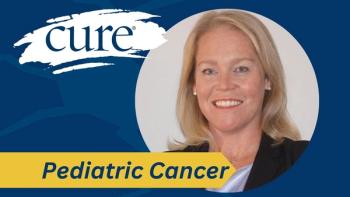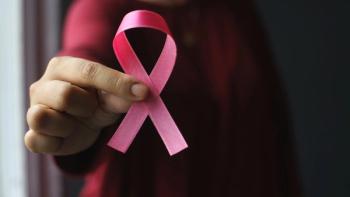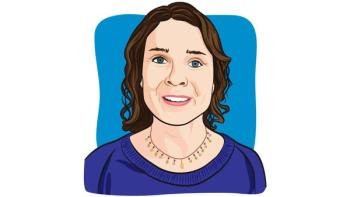
Potential for Liquid Biopsy Testing Boosted in Large Study
Though more research still needs to be done, potential for liquid biopsies was shown in a study involving 15,000 patients who represented a multitude of cancer types.
The liquid biopsy testing method correlated closely with mutations described in databases, and in some cases from tumor biopsies, in a genomic analysis of circulating tumor DNA (ctDNA) in blood samples from more than 15,000 patients with multiple cancer types. Research was presented at the 2016 annual meeting of the American Society of Clinical Oncology (ASCO), a gathering of over 30,000 oncology professionals in Chicago.
ASCO experts said the research, described as the largest-ever liquid biopsy study, marks an important step forward for the field, but more research is needed to establish the clinical utility of assays being developed throughout the testing industry.
The liquid biopsy sector has been booming in recent years, as companies scramble to commercialize technologies that can extract genomic information from ctDNA and other blood- or urine-based markers without the need to rely on often difficult-to-obtain tissue samples.
In the study highlighted at ASCO, the Guardant360 next-generation sequencing test, which targets 70 genes, was used to analyze somatic mutations among patients with 50 different tumor types. Most of the results were compared with data from The Cancer Genome Atlas (TCGA) and some were correlated with results of genetic testing on tumor tissue.
“The major finding of the study was that ctDNA mutation patterns were highly concordant with tissue analysis as reported by the TCGA and plasma analysis as reported in this study,” said research presenter Philip Mack, professor and director of Molecular Pharmacology at the University of California Davis Comprehensive Cancer Center, during an ASCO press briefing. Mack said conducting mutation testing on tissue samples is still the gold standard, but that the quantity and quality of tissue available for genomic testing after pathological analysis is often inadequate. He also noted that liquid biopsies would be particularly useful for assessing patients during the course of their disease.
“Probably the biggest role for plasma analysis will be occurring down the road as patients are progressing on therapies as their tumors are evolving as a way to monitor progression of those cancers,” said Mack.
Mack and colleagues analyzed samples from 15,191 patients with advanced lung cancer, breast cancer, colorectal cancer and other cancers. In all, 17,628 blood samples were tested for ctDNA; most results were compared with the TCGA, while findings for 398 patients were correlated with results of genetic testing on tumor tissue.
For the available tumor samples, the assay matched testing for key abnormalities in EGFR, BRAF, KRAS, ALK, RET and ROS1, at the rate of 94 percent to 100 percent. Additionally, the assay was able to detect mutations at low levels of ctDNA. Half of all alterations were detected at or below ctDNA of 0.4 percent, Mack indicated.
Overall, ctDNA mutations could be detected in 83 percent of the blood samples analyzed. However, not all patients had sufficient ctDNA for the plasma-based test particularly individuals with glioblastoma, which researchers believe might be because the cell-free DNA cannot traverse the blood-brain barrier. As a result, researchers are seeking to improve the sensitivity of the test for extremely low levels of ctDNA, according to an ASCO press release. Notably, ctDNA testing for the EGFR T790M resistance mutation did not correlate with the TCGA, probably because patients in the tissue-based population had not yet received the anti-EGFR inhibitor therapy that promotes the mutation, researchers indicated.
In the area of clinical utility, the assay pointed to potential treatment options for nearly two-thirds of the patients, including FDA-approved drugs and agents being evaluated in clinical trials.
Mack said that alterations detectable in ctDNA fractions as low as 0.06 percent responded to treatment. For patients with lung cancer, liquid biopsy would be particularly helpful, the research indicated. Of 362 lung cancer cases, 63 percent had insufficient tissue for testing, but these samples could be evaluated for ctDNA.
Investigators said the research suggests 4 classes of clinical outcome benefit using the liquid biopsy: Actionable mutations in cases with insufficient tissue quantity such as testing for ALK, EGFR or BRAF aberrations in lung cancer and ERBB2 amplification in gastric cancer; actionable resistance mutations upon progression, such as MET amplification or EGFR T790M in lung cancer; evolution upon progression, such as ERBB2-amplified metastatic breast cancer with triple-negative primary tumor; and tumors with genotypes that need more extensive driver mutation testing.
In commenting upon the research, ASCO spokesman Richard L. Schilsky said the study “provides important evidence on the road to demonstrating the clinical utility of liquid biopsies.”
He noted, however, that the study was not a randomized trial and that the ctDNA testing was conducted on samples from patients with advanced cancers, whereas the TCGA is derived from patients who do not have metastatic disease.
ASCO spokesman Sumanta Kumar Pal pointed out that in addition to the Guardant360 assay, other companies have developed liquid biopsy testing methods and that “it’s going to be key for us to rigorously define which of these platforms delivers optimal results.”
Pal also stressed the importance of establishing the clinical utility of such assays. He said there is no purpose in ordering such testing for cancers in which there are no drugs for targeting the mutations that would be found—such as in certain gynecologic cancers—unless the patient is a candidate for a clinical trial evaluating that target.
“The utility is what we should all be doing across cancer types, because if we can’t do anything with that information this technology, although quite eloquent, is unlikely to change the natural history of any one person’s cancer,” said Pal.




